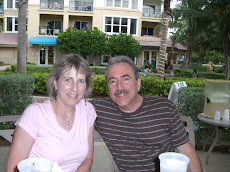 I like to reflect back now and then on experiences I had with my Dad, Rodger Goodwin. He was born in 1911 and he lived for 90 years.
I like to reflect back now and then on experiences I had with my Dad, Rodger Goodwin. He was born in 1911 and he lived for 90 years.One of my favorite times to spend with my Dad was shopping for the Christmas tree and then decorating it. I know I am a lot like him - even as far as picking a tree based on the shape of the tree, the spacing of the branches, the pine needles and the size of the trunk.
We would visit the lots with all of the pine trees, and for the many years in Cleveland and then Lexington, Ky., I can remember how very cold it could be wandering around a snowy land of trees.
My Dad always wore his heavy leather mittens that could manage the cold and the snow, and then heave our tree into his station wagon. I can see him in his hat with fur trim and heavy winter coat, and his rubber galoshes.
We must have gone at night for our trees, because I recall how much I liked how the lots were circled with cords of large white bulbs - it always looked so magical.
Why so much fuss over the our trees over the years? We expressed our artistry many ways, and creating a beautiful tree was important! Putting the lights on to make sure there was plenty of color, and then placing the special ornaments just so was important. When it was all said and done we would just sit back and stare in a dreamy kind of way at the sparkle and take in the fragrance of the pine.






